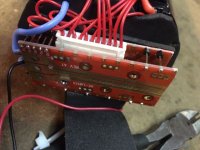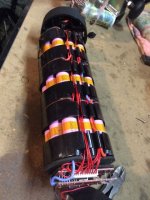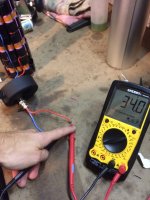tl01
1 mW
About 6 weeks ago I purchased this kit --> http://www.greenbikekit.com/electri...g-e-bike-kit-with-samsung-bottle-battery.html
It's been on my bike, functioning mostly as expected for the past 4 weeks. The only oddity out of the box was that the indicator on the battery always had at least one red bar, but since range and performance were as expected, I didn't give it a second thought.
However, the battery stopped charging, and no longer powers the wheel.
I opened the battery case to test voltage, and all of the cells that I'm able to easily access appear normal...so it seems like the problem is with the little gizmo at the top (shown in photos below...also, I'm a novice, can you tell?). The voltage on the other side of the gizmo is not the 36-38v that I would expect, but more like 12. Any good ideas on what a relative amateur might do to fix this? I already emailed GBK. No response just yet.
It's been on my bike, functioning mostly as expected for the past 4 weeks. The only oddity out of the box was that the indicator on the battery always had at least one red bar, but since range and performance were as expected, I didn't give it a second thought.
However, the battery stopped charging, and no longer powers the wheel.
I opened the battery case to test voltage, and all of the cells that I'm able to easily access appear normal...so it seems like the problem is with the little gizmo at the top (shown in photos below...also, I'm a novice, can you tell?). The voltage on the other side of the gizmo is not the 36-38v that I would expect, but more like 12. Any good ideas on what a relative amateur might do to fix this? I already emailed GBK. No response just yet.




